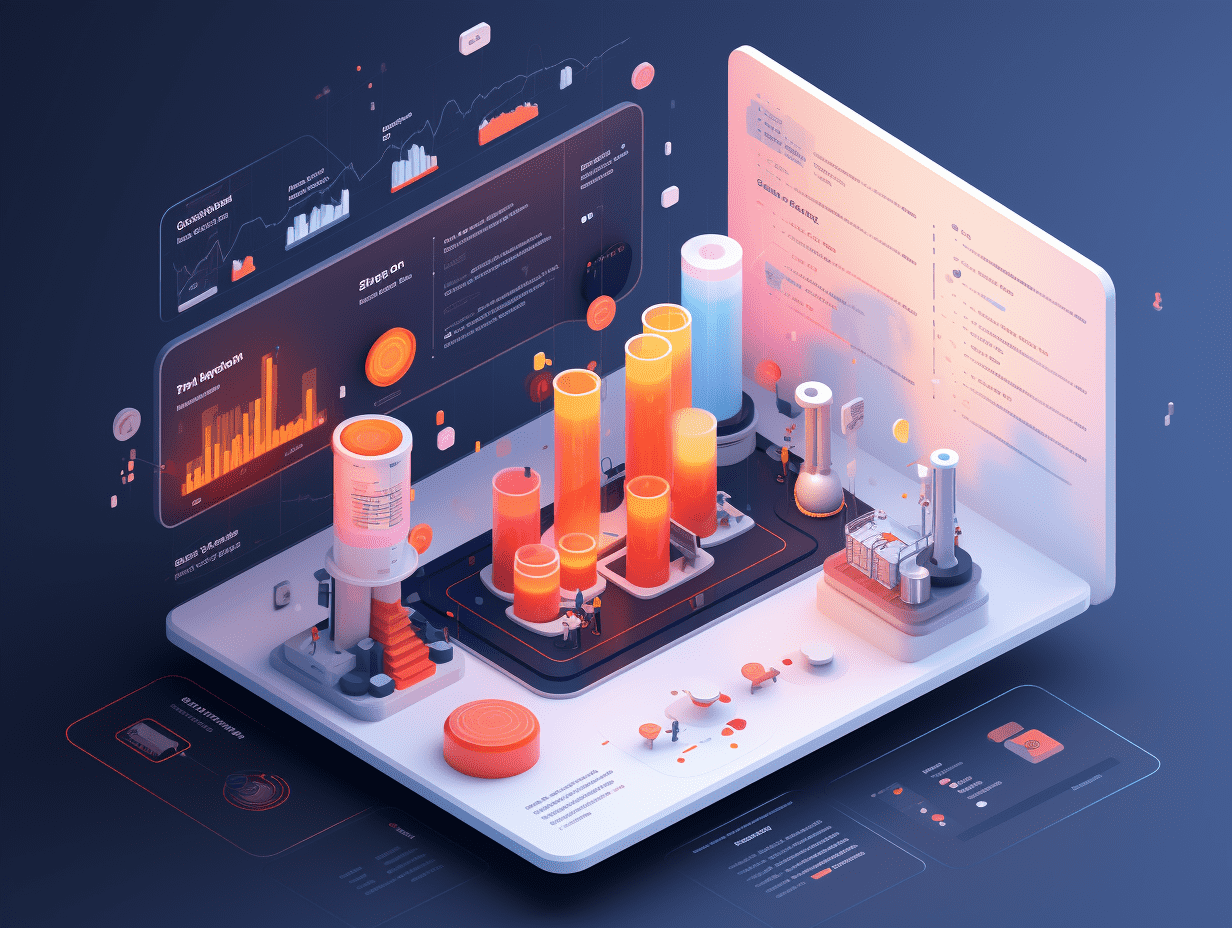CITIC SEC: Resource security, corporate expansion overseas, and technological competition are still the most important structural market clues.
This line emphasizes to focus on supply from within and demand growth from outside. It suggests focusing on industries where a single supply country has sustained pricing power, such as rare earths, cobalt, tungsten, phosphorus chemical, pesticides, fluorine chemicals, and solar PV inverters.
CITIC SEC released a research report, indicating that resource security, Chinese enterprises going overseas, and technological competition are all important clues that will dominate the market structure for a long time to come. These three clues correspond to the industry allocation framework of resources + going global + new quality productivity. The Fourth Plenary Session of the CPC Central Committee at the end of October and the APEC meeting are crucial, together forming the cornerstone of Chinese enterprises' "going global." Faced with the current market, the bank recommends staying focused, ignoring short-term fluctuations, and focusing on industries with real profit realization or strong industrial trends. Trend-oriented varieties focus on resources, consumer electronics, innovative pharmaceuticals, and games, corresponding to the non-ferrous ETF, VR ETF (with higher consumer electronics ETF components), Hang Seng innovative pharmaceutical ETF, and game ETF; allocation-oriented varieties can include chemicals and military industry. At the same time, the bank emphasizes the importance of paying attention to industries that have pricing power due to limited supply and growing demand, such as rare earths, cobalt, tungsten, phosphate chemicals, pesticides, fluorine chemicals, and photovoltaic inverters.
CITIC SEC's main points are as follows:
Resource Security: Insufficient investment in traditional resource industries due to sustained global high interest rate environment leading to frequent supply shocks
1) Many traditional industries, especially upstream resources, have long-term underinvestment issues that have not been resolved. Apart from the flourishing AI infrastructure construction in North America, in the high corporate bond interest rate environment in Europe and America, private sector investment in most developed countries and regions remains weak, especially the capital expenditure of traditional industrial enterprises in Europe and America has been in a low ebb in recent years. By observing Japan's machine tool orders to Europe and America, which have been in negative growth for 28 consecutive months (Japan Machine Tool Industry Association data), it can be seen that the bottom of the capital expenditure cycle of manufacturing in Europe and America usually occurs when interest rates bottom out. As long as long-term interest rates have not bottomed out, the capital expenditure of the manufacturing industry will not bottom out. In this round of interest rate cuts in Europe and America, not only have long-term interest rates not significantly decreased, but there has also been a continuous selling of sovereign bonds (especially in Europe), and private sector financing costs have remained high. To address this issue, the United States has taken measures such as tariff wars and government strategic investments (according to Reuters, the latest move is that the Trump administration is seeking to acquire shares of American Lithium Corporation). For many traditional industries, especially upstream resources, the long-standing issue of underinvestment has not been resolved, with inadequate redundant supply elasticity, while demand continues to grow. The recent production reduction in the Free Trade Zone once again verifies that the situation of limited supply has not fundamentally changed. Taking copper as an example, based on forecasts made by the CITIC SEC research department's non-ferrous metal group based on data from the second quarter of 2024 to the second quarter of 2025, despite the LME copper price rising from $8,100 in April 2025 to the current $10,200, production expectations of major copper mines around the world in 2025 have shown a trend of quarterly downward adjustments, from 14.89 million tons down to 14.21 million tons, incremental production from 900,000 tons down to 80,000 tons, corresponding growth rates from 6.4% down to 0.6%.
2) Complex geopolitical environment and countries' emphasis on security self-sufficiency have led to more frequent supply shocks. Recently, the Democratic Republic of the Congo has determined the basic approach to quotas, with the Congolese government updating its cobalt export policy on September 20, extending the ban on cobalt exports from the DRC to October 15, and the cobalt export quota for 2026-2027 will only be 44% of the annual production, with a clear intention to control prices through long-term quota adjustments. According to Wind, the price of cobalt has recently broken through the RMB 30,000/ton threshold. Indonesia has further tightened nickel processing product exports (with some nickel mining permits suspended in September). China's export supervision system for rare earths is gradually improving. More and more resource-rich countries are realizing that long-term underselling of strategic scarce resources is unsustainable, and they must control supply to ensure a reasonable price level and leverage this to gain some geopolitical leverage or protect their own interests.
Enterprise Going Overseas: The globalization of Chinese enterprises is the most important fundamental clue and market clue
1) Chinese enterprises going overseas and globalization are the most core but relatively obscure fundamental clues of this round of the market. The bank previously put forward a viewpoint: to view the fundamentals of A-share listed companies from the perspective of the global market, A-shares are no longer just a reflection of the domestic economic cycle. According to calculations based on Wind data, for non-financial listed companies with overseas revenue accounting for more than 20% currently, their contribution to the profits of all A-share non-financial companies has reached 40%, and their market value share has reached 37%, enough to affect the entire market's trends. Over the past three years, as the proportion of overseas revenue has increased, the A-share non-financial enterprises with overseas revenue exceeding 20% have seen a continuous increase in return on equity (ROE), from around 7% in early 2022 to around 10% and has remained stable, while on the other hand, ROE for other enterprises has declined from 9% to around 6%. This differentiation has led to the mainstream narrative of the market (especially that of foreign investors) still staying at the level of "market and fundamentals are diverging, mainly driven by liquidity," and overly focusing on the process of deposit migration. In fact, what truly affects the sustainability of the market is whether China can use technology to respond to complex trade and geopolitical environments, maintaining a relatively stable environment for Chinese enterprises to go overseas and globalize. Once this trend is recognized by the market and reaches a consensus, the valuations of many leading Chinese manufacturing companies may see a systematic increase.
2) The stability of the trade environment and China's anti-internal competition efforts are two very important conditions for maintaining market trends. On the demand side, the overseas growth and globalization of Chinese enterprises require a relatively stable economic and trade environment. In fact, the launch of this round of A-share market trends exactly coincided with the formation of a mutually balanced and stable trade environment after the Sino-US-Japanese-Geneva negotiations. The continuous valuation expansion of core varieties such as overseas computing power chains, T chains, consumer electronics, innovative pharmaceuticals, or games has formed the primary source of profit in this round of market trends, all of which are beneficiaries of a stable economic and trade environment and overseas demand. Therefore, the hawkish stance of the Federal Reserve and the strengthening of the US dollar will not affect the continuation of structural market trends in A-shares. What the market needs is, in fact, a stable overseas economy rather than a recession, and it needs "rising in the East and stability in the West" rather than "rising in the East and falling in the West." China's "anti-internal competition" policy is also crucial. The external environment is an opportunity period for Chinese companies, but if they continue with the old competitive expansion of capacity, Chinese companies may miss the key window of transforming their advantage in manufacturing market share into pricing power, and even face more trade barriers and non-commercial means of resistance. Overall, the logic of Chinese enterprise globalization and profit margin improvement must be smoothly interpreted within the context of "stable demand" and "optimized supply." For this reason, the Fourth Plenary Session of the 19th National Committee of the Communist Party of China and the APEC meeting at the end of October are crucial. The 14th Five-Year Plan may strengthen the logic of "anti-internal competition" from the supply side, and whether China can maintain a stable trade relationship with the United States will determine the sustainability of demand, both of which together form a solid foundation for the main trend of China's midterm "globalization."
Technological Competition: Chinese enterprises are transitioning from strategic tolerance to strategic aggression, and technological competition between China and the United States is intensifying
1) The AI strategies of Chinese tech giants are becoming increasingly clear. Compared to the aggressive AI strategies of North American technology companies over the past three years, Chinese internet giants have been relatively vague in terms of AI investment and strategy in recent years, but top internet companies have recently announced ambitious plans. Alibaba announced at the 2025 Yunqi Conference on September 24 that it is advancing a three-year plan to develop a 380 billion AI basic infrastructure and will continue to increase investment, and on the same day, Alibaba also announced a partnership with NVIDIA for Physical AI cooperation. Tencent announced its AI deployment strategy on September 16, and JD.com announced its goal of creating a trillion-dollar artificial intelligence ecosystem in the next three years on September 25. In comparison, AI infrastructure development in North America has reached a white-hot stage. According to recent data from the International Data Corporation (IDC) on global AI and generative AI spending forecasts, the total investment in global AI IT is expected to increase to $1,261.9 billion in 2029, with a compound annual growth rate (CAGR) of 31.9% from 2025 to 2029. At the same time, the commercial user market may need new application breakthroughs to open up new commercial market space to match the current capital expenditure expansion. According to the "Business Trends and Outlook Survey" by the US Census Bureau, the trend of growth in the proportion of companies using AI in production in the past two weeks as an indicator of AI utilization has significantly slowed since June this year. In comparison, the bank believes that China's AI narrative resilience has only just begun.
2) If the AI momentum shifts from the cloud side to the edge side, it could be a huge opportunity for the domestic application ecosystem. Recently, there have been frequent news about OpenAI's layout in edge hardware, with Sameer Samat, head of Google's Android ecosystem, announcing on September 25 that Gemini and Android OS will be combined to launch an "Android computer operating system." Apple is also pushing for third-party software integration into Apple Intelligence after launching the new version of Apple Intelligence in September. There are clear signs of focusing on the edge side by major companies. In the future, edge devices will have at least two traffic entry points: AI Agents and the UI interface of applications. As long as they can better adapt to AI Agents and be better called upon by Agents in terms of content and functionality, some excellent industry-specific applications have the opportunity to challenge the already solidified application ecosystem barriers. This will bring a huge business opportunity to a large number of small and medium developers, similar to the initial explosive period of mobile internet applications, revitalizing the Chinese mobile internet and bringing more diverse applications and monetization scenarios, and potentially creating more job opportunities. Consumer-side applications provide a fertile ground for fully leveraging the engineering dividend in China, which, combined with China's globally leading precision manufacturing capabilities, could replicate the success of catching up in the era of mobile-internet application.
Risk Factors:
Intensification of friction in the fields of science and technology, trade, and finance between China and the United States; Insufficient intensity and effectiveness of domestic policies, economic recovery falling short of expectations; Unexpectedly excessive tightening of macro liquidity at home and abroad; Further escalation of conflicts in regions such as Russia, Ukraine, and the Middle East; Insufficient digestion of China's real estate inventory.
Related Articles

DL Holdings GP (01709) plans to acquire Bitcoin mining machines and BM mining machines.

CICC Strategy: A new upswing is gathering momentum in October.

CMS(00867): Class 1 new drug MG-K10 humanized monoclonal antibody injection has obtained the approval notification for Phase III clinical trials for the indication of chronic idiopathic urticaria.
DL Holdings GP (01709) plans to acquire Bitcoin mining machines and BM mining machines.

CICC Strategy: A new upswing is gathering momentum in October.

CMS(00867): Class 1 new drug MG-K10 humanized monoclonal antibody injection has obtained the approval notification for Phase III clinical trials for the indication of chronic idiopathic urticaria.






